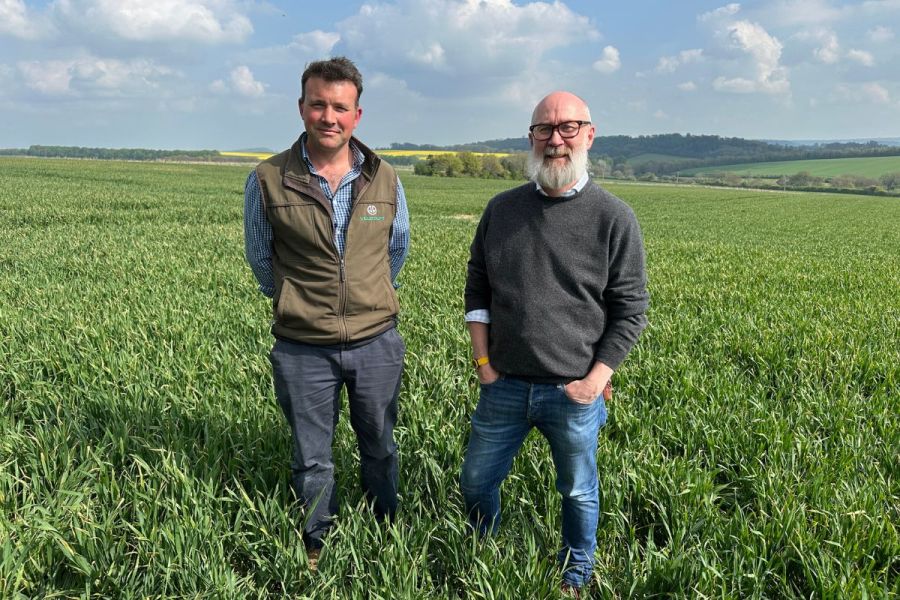Trials suggest the formulation behind RevyPro is enabling an enhanced performance for the product’s two actives, offering growers more than the sum of its parts
Independent trials indicate using RevyPro (Revysol+ prothioconazole) at T2 in wheat not only offers complimentary benefits, but could also achieve another level of disease control through boosting other fungicide actives in a tank mix.
In fact the work, conducted by Velcourt across multiple sites and years, consistently suggests this is the case, states the firm’s technical director, Nick Anderson. “Having first trialled Revypro in 2023, despite achieving positive results, I was a little unsure of its benefits and where it might fit within a fungicide programme,” he explains.
“So we wanted to know whether there was a firm advantage to be had from the RevyPro formulation compared with the other Revysol-containing products – Revystar XE (Revysol+ fluxapyroxad) and Myresa (Revysol).”
The trials took place across four sites with two protocols – evaluating the performance of RevyPro at T2 compared with other market-leading fungicide products aimed at this timing, plus the outcome of different tank mix combinations.
The trials focussed on septoria activity – the rest of the programme (T1 and T3) was the same across treatments and was designed to deliver good rust activity, but limited septoria control. There were also fully untreated and untreated at T2 plots for use as controls.
According to Nick, the results were conclusive across both protocols. “The trial indicates that a lower loading of Revysol applied as RevyPro at 1.5 l/ha (75g Revysol+ 150g prothioconazole)
performs just as well as a higher loading of the active applied as Revystar at 1.0 l/ha (100g Revysol+ 47.5g fluxapyroxad), indicating a formulation benefit with RevyPro.”
Critically, the second protocol explored the role of RevyPro as a tank mix partner, which Nick says is where he believes its strength truly lies. “In particular, this looked at different actives to use alongside pydiflumetofen/ Adepidyn and fenpicoxamid/Inatreq – which are currently perceived as an industry standard for T2 .
“RevyPro mixtures with Inatreq or with Adepidyn outperformed the other combinations of actives in the trial (fenpicoxamid, isoflucypram and straight Revysol), including combinations of Adepidyn and Inatreq. Adepidyn+ RevyPro and Inatreq+ RevyPro mixtures delivered the highest yield responses in the trials.
“Equally in various scenarios, RevyPro with its lower loading of Revysol, is out-performing Myresa (straight Revysol) at a higher rate.”
Although the results have proven unexpected given his initial scepticism, Nick says the data will help to inform Velcourt’s strategy moving forward. “In a situation where we have a range of good quality fungicide actives to choose from, understanding how best to fit these together is where growers can gain an advantage.
“A simple one-can solution from a single manufacturer isn’t going to cut it, likewise, the most effective partner for the strongest performing active isn’t necessarily the second best, as this work indicates.”
But what’s behind RevyPro’s now proven track record? BASF’s Jared Bonner explains that aside from containing Revysol which has become a highly important azole, its performance is down to its unique formulation. “This is giving exceptional leaf and ear coverage, with rapid uptake getting both the Revysol and prothioconazole components into the leaf faster than other prothioconazole products.
“This ensures better protection from wash-off and UV degradation, while enabling quicker activation of prothioconazole for enhanced disease activity.”
He agrees that combining RevyPro with alternative modes of action within a tank mix offers a robust approach for tackling septoria and rusts, as well as supporting best practice in resistance management. “It’s important to note that RevyPro must be mixed with another mode of action when targeting septoria.
“Beyond wheat, RevyPro can also be used in winter and spring barley, offering an excellent fit by controlling of all major diseases: net blotch, rhynchosporium, rust and ramularia.”
This article was taken from the latest issue of CPM. For more articles like this, subscribe here.
Sign up for Crop Production Magazine’s FREE e-newsletter here.




